It’s happened. There’s another piece of Canadian public art for everyone to marvel at, debate, question, argue about and drag online. We’ve had everything from giant rings to a pile of silver balls to a bunch of cows.
Now, there’s the chandelier.
This week, the City of Vancouver unveiled the long-anticipated $4.8-million art piece, “Spinning Chandelier.” Abbotsford artist Rodney Graham designed the giant spinning light-up fixture now hung under the Granville Street Bridge. Twice a day at noon and 9 p.m., it undergoes a four-minute performance where it spins and drops down beneath the bridge.
It’s an ambitious project that has attracted praise and criticism from Vancouverites.
But it’s not the first piece of public art to divide a Canadian city. Sometimes you get beautiful touching pieces that reflect on a community’s past and present. And sometimes you get a giant blue ring on the side of the highway.
With that in mind, let’s look back on some of Canada’s most beloved, reviled and talked about public art pieces. And let us know — do you love these or are they better left on the drawing board?
Travelling Light

City: Calgary
Artist: inges idee (Hans Hemmert, Axel Lieber, Thomas A. Schmidt and Georg Zey)
Year: 2013
What is it and what does it mean?: Better known by locals as the Giant Blue Ring, this blue hoop topped with street lights sits off the highway in the city’s northwest. The ring is meant to represent the wheel, what the city calls “the universal” transportation. The artists behind it also say it’s supposed to give a window to different views of the city — look through one side and you see downtown, look through the other and you see the countryside.
Love it or hate it?: The blue ring has inspired memes, loving tributes and even one of the city’s most popular Twitter accounts. Like a lot of public art on this list, it was called a waste of public money, but many Calgarians have grown to begrudgingly love the ring. Anytime I’m travelling back into the city from the north, it sparks a warm sense of coming home in me.
Bowfort Towers
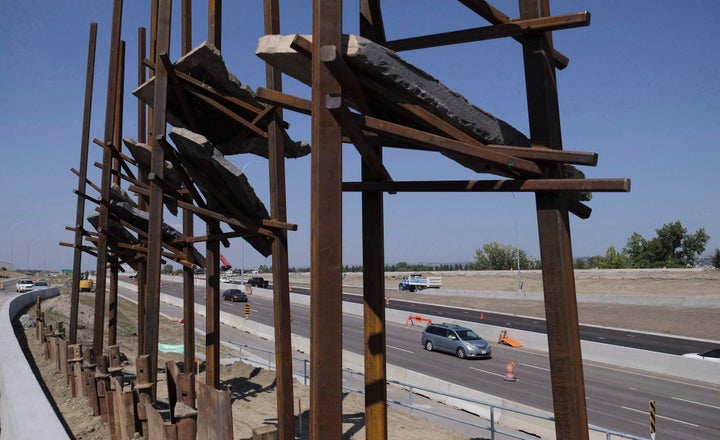
City: Calgary
Artist: Del Geist and Patricia Leighton
Year: 2018
What is it and what does it mean?: The $500,000 art piece is a pile of metal and rocks on the side of the Trans-Canada Highway entering Calgary from the west. It’s intended to be a “gateway to the city” while also integrating local Indigenous symbolism, according to the artists.
Love it or hate it? The piece was widely criticized for appropriating traditional Blackfoot burial scaffolds. Geist, a New Yorker, claims he consulted with local Blackfoot leaders about the symbolic significance of the towers and using four of them to represent the seasons, though he wouldn’t name who he talked to. Many Blackfoot artists spoke out after the project’s unveiling and criticized the use of a non-Indigenous artist to make Indigenous art.
Untitled (aka that guy holding a condo)
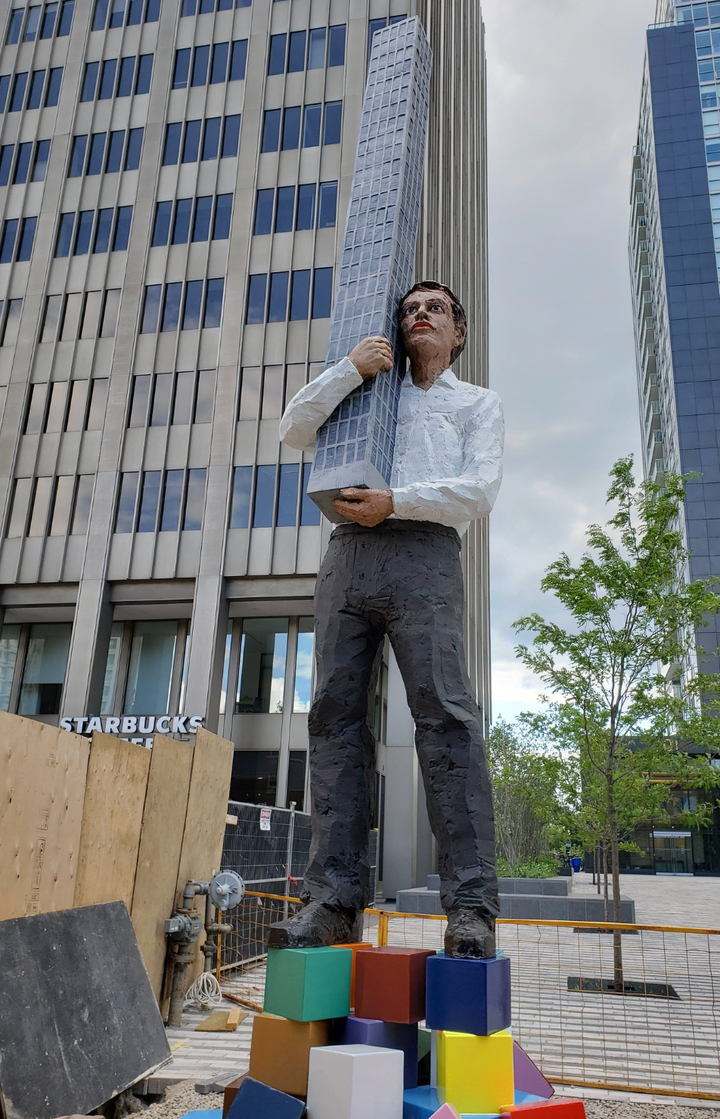
City: Toronto
Artist: Stephan Balkenhol
Year: 2018
What is it and what does it mean?: Well, it’s a 25-foot-tall statue (7.62 metres) of a guy holding a condo, built by a condo developer. Seems pretty self-explanatory. A plaque there claims the statue embodies “the present moment in the city’s evolution and invite deep contemplation.” The figure — a neutral white man — has appeared repeatedly in Balkenhol’s work, which he says represents an “everyday persona.”
Love it or hate it? In a tweet, user Brenden Sinclair called it both a “horrible eyesore” and perfect for what Toronto is “right now.” People seem to see it either as an ironic dig at developers and the unaffordability of the city, or a lionization of those very developers.
Talus Dome
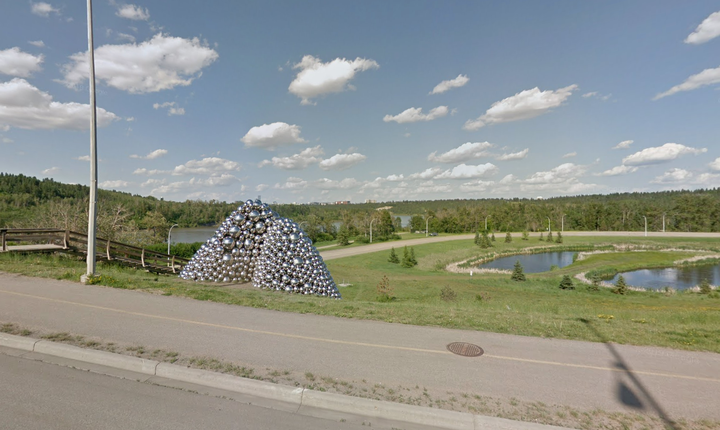
City: Edmonton
Artist: Benjamin Ball and Gaston Nogues
Year: 2011
What is it and what does it mean?: The world “talus” refers to the geological accumulation of gravel at the bottom of a cliff. The city says the piece is intended to remind people of the city’s relationship to the natural river valley. It’s made of around 1,000 handmade steel spheres
Love it or hate it? At $600,000, this pile of silver balls was the most expensive piece of art in Edmonton’s history when it was built in 2011. At the time, people compared it to everything from rabbit poop to a bag of marbles — a ringing endorsement.
Zones of Immersion
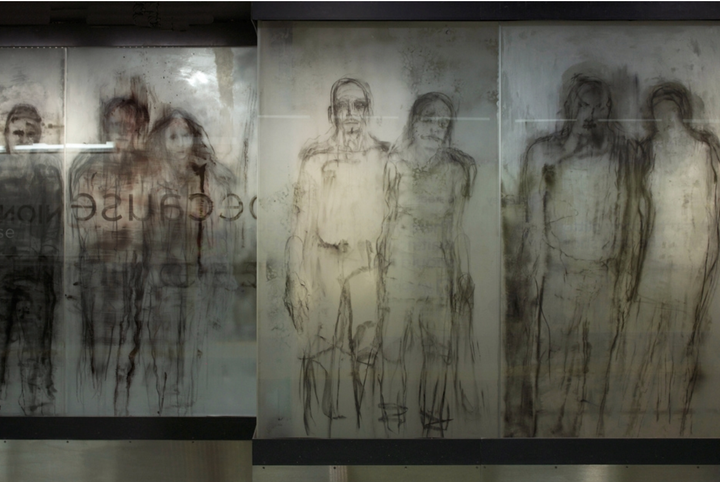
City: Toronto
Artist: Stuart Reid
Year: 2015
What is it and what does it mean?: Reid himself said the shadowy figures and depressing expressions are meant to represent the bleak world of commuting on the subway.
Love it or hate it?: When it was first unveiled, people definitely hated it. It spurred a heated debate on whether the image was depressing, accurate or accurately depressing. If you ride the TTC every day, packed deep in those underground cars, I can understand why you’d find it relatable.
Drunken Lampposts
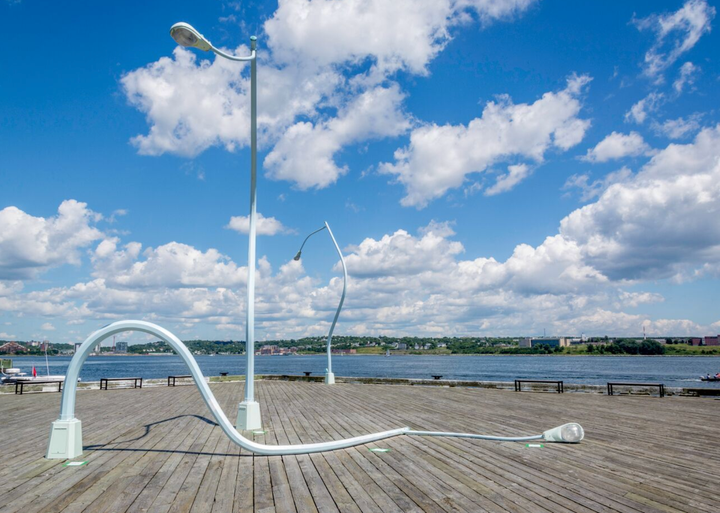
City: Halifax
Artist: Chris Hanson and Hendrika Sonnenberg
Year: 2013
What is it and what does it mean?: Two separate works, “Fountain” And “Get Drunk, Fall Down,” depict lampposts in different states of intoxication. One is shown blasting water into the harbour, while another is twisted and fallen down, with another looking on. The artists say they are meant to represent peoples’ drunken behaviour in the area, and prompt a laugh or two.
Love it or hate it?: What other piece of art can you Instagram and then caption: “Go home lamppost, you’re drunk!”
Spinning Chandelier
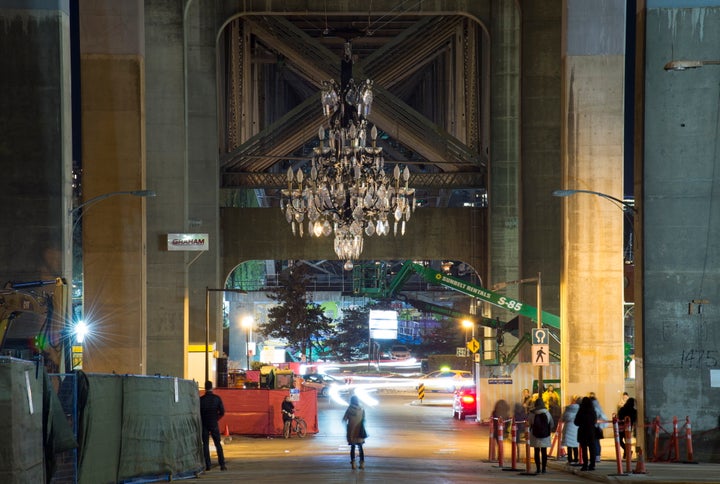
City: Vancouver
Artist: Rodney Graham
Year: 2019
What is it and what does it mean?: The 18th-century style chandelier weighs more than 3,400 kilograms and is made from stainless steel, LED lights and 600 polyurethane crystals. It’s inspired by a film Graham made that was motivated by a Sir Isaac Newton experiment, where he suspended a bucket filled with water and let it twirl to the ground on a rope.
Love it or hate it?: Mayor Kennedy Stewart has high praise for the piece, calling it “the most important piece of public art” in Vancouver’s history. However, many critics have called out the irony of putting such a lavish representation of opulence in a city plagued by income inequality and homelessness.